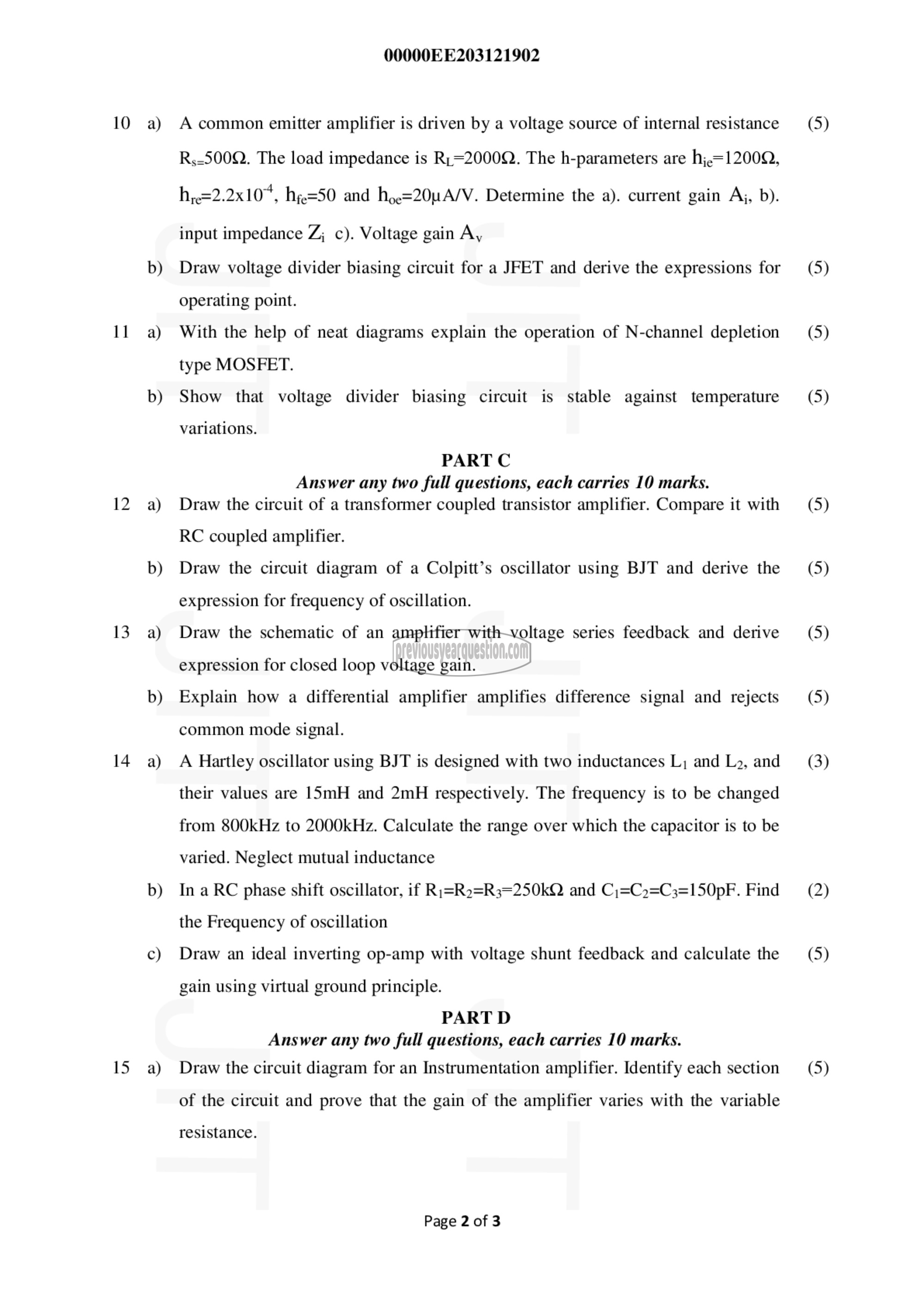APJ ABDUL KALAM TECHNOLOGICAL UNIVERSITY Previous Years Question Paper & Answer
Semester : SEMESTER 3
Subject : Analog Electronic Circuits
Year : 2022
Term : JANUARY
Scheme : 2015 Full Time
Course Code : EE 203
Page:2
10
11
12
13
14
15
a)
b)
a)
b)
a)
b)
a)
b)
a)
b)
௦)
a)
00000EE203121902
A common emitter amplifier is driven by a voltage source of internal resistance
R,-500Q. The load impedance is Ry=2000Q. The h-parameters are h;.=1200Q,
hye=2.2x107, hge=50 and hog=20uA/V. Determine the a). current gain Aj, ए).
input impedance Z; c). Voltage gain Ay
Draw voltage divider biasing circuit for ೩ JFET and derive the expressions for
operating point.
With the help of neat diagrams explain the operation of N-channel depletion
type MOSFET.
Show that voltage divider biasing circuit is stable against temperature
variations.
PART C
Answer any two full questions, each carries 10 marks.
Draw the circuit of a transformer coupled transistor amplifier. Compare it with
RC coupled amplifier.
Draw the circuit diagram of a Colpitt’s oscillator using BJT and derive the
expression for frequency of oscillation.
Draw the schematic of an amplifier with voltage series feedback and derive
expression for closed loop voltage gain.
Explain how a differential amplifier amplifies difference signal and rejects
common mode signal.
A Hartley oscillator using BJT is designed with two inductances L; and 1.2, and
their values are 1511111 and 2mH respectively. The frequency is to be changed
from 800kHz to 2000kHz. Calculate the range over which the capacitor is to be
varied. Neglect mutual inductance
In a RC phase shift oscillator, if Ri=R2=R3=250kQ and C;=C2=C3=150pF. Find
the Frequency of oscillation
Draw an ideal inverting op-amp with voltage shunt feedback and calculate the
gain using virtual ground principle.
PART 0
Answer any two full questions, each carries 10 marks.
Draw the circuit diagram for an Instrumentation amplifier. Identify each section
of the circuit and prove that the gain of the amplifier varies with the variable
resistance.
Page 2 of 3
(5)
(5)
(5)
(5)
(5)
(5)
(5)
(5)
(3)
(2)
(5)
(5)
